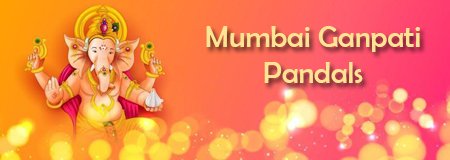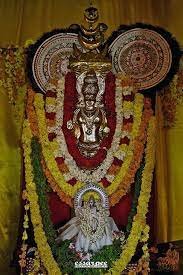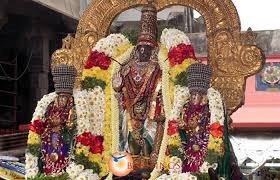Aranmula Parthasarathy Temple
The Aranmula Parthasarathy Temple is a Hindu temple located near Aranmula, a village in Pathanamthitta District, Kerala, South India. It is dedicated to the God Krishna, an avatar of Vishnu, who is worshipped as Parthasarathy (Arjuna’s charioteer). Constructed in the Kerala style of architecture, it is one of the “Divya Desams”, the 108 temples of Vishnu revered by the Alvar saints.
It is one of the most important Krishna temples in Kerala and is one of the five ancient shrines in Kerala, connected with the legend of the Mahabharata, where the five Pandavas are believed to have built one temple each; Aranmula is built by the Pandava prince Arjuna.
The sacred jewels, called Thiruvabharanam of Ayyappan are taken in procession to Sabarimala each year from Pandalam, and Aranmula Temple is one of the stops on the way. Also, the Thanka Anki, golden attire of Ayyappan, donated by the king of Travancore, is stored here and taken to Sabarimala during the Mandala season of late December.
Aranmula is also known for snake boat race held every year during Onam linked to the legends of the Mahabharata. The temple has four towers over its entrances on its outer wall. The Eastern tower is accessed through a flight of 18 steps and the Northern tower entrance flight through 57 steps leads to the Pamba River. The temples has paintings on its walls dating back to early 18th century.
The temple is open from 4 am to 11:00 am and 5 pm to 8 pm and is administered by Travancore Devaswom Board of the Government of Kerala.
Legend
The Aranmula Parthasarathy Temple is one of the five ancient shrines in the Chengannur area of Kerala, connected with the legend of the Hindu epic Mahabharata. Legend has it that the Pandava princes, after crowning Parikshit as king of Hastinapura left on a pilgrimage. On arriving on the banks of Pamba River, each one is believed to have installed a tutelary image of Krishna; Thrichittatt Maha Vishnu Temple by Yudhishthira, Puliyur Mahavishnu Temple by Bheema, Aranmula by Arjuna, Thiruvanvandoor Mahavishnu Temple by Nakula and Thrikodithanam Mahavishnu Temple to Sahadeva.Legend has it that Arjuna built this temple, to expiate for the sin of having killed Karna on the battlefield, against the dharma of killing an unarmed enemy. It is also believed that here, Vishnu revealed the knowledge of creation to the god Brahma, from whom the Madhu-Kaitabha demons stole the Vedas.
The image of the temple was brought here in a raft made of six pieces of bamboo to this site, and hence the name “Aranmula” (six pieces of bamboo). There is another story, which says it was brought in a raft made of seven pieces of bamboo, out of which one got separated at a place 2 km upstream of the current Temple’s location on the banks of Pamba. The place is called “Mulavoor Kadavu” meaning “river bank where the bamboo pole came off”. There are still descendants of a family of Ayurveda physicians with great lineage by that name Mulavoor residing there.As per other legend, the place derives its name from arin-villai, a land near a river.
As per another legend, during the battle of Kurukshetra, the Kaurava prince Duryodhana had taunted Bhishma of not using his full might in fighting the Pandavas. This taunt by Duryodhana filled Bhishma with rage. Bhishma took a vow to fight with such ferocity the next day that Krishna himself would be forced to break his vow of not using a weapon during the war in order to protect Arjuna. On the ninth day of the battle, the Kauravas reigned supreme under the leadership of Bhishma, when Krishna motivated Arjuna to take initiative and vanquish his foe. Bhishma was unparalleled with the use of celestial weapons in such a manner that Arjuna could not counter the onslaught. Arrows after arrows fired from Bhishma’s bow breached the defenses of Arjuna and inflicted wounds to his body by penetrating his armour. The string of Arjuna’s bow, the Gandiva was snapped during the battle. Seeing Arjuna’s plight, Krishna jumped down in rage, and took up his discus charging towards Bhishma. Bhishma was overfilled with joy and surrendered to Krishna. Meanwhile, Arjuna beseeched Krishna not to kill Bhishma, as it would have been against Krishna’s vow to take up arms in his battle. It is believed that it is this image of Krishna that is enshrined here, with a discus. This symbolizes the Lord’s act of compassion to both his devotees on either side of the battle. Krishna broke his vow to protect Arjuna and also to fulfill the promise that his ardent devotee Bhishma had made.
Krishna presiding here in the Vishvarupa form is considered as “Annadana Prabhu” (The Lord who provides food) along with other temples like Vaikom Mahadeva Temple and Sabarimala. It is believed that those whose Annaprashana is performed at the Aranmula Parthasarathy temple would never be affected by the pangs of poverty throughout their life.
Aranmula Mirror is also related to the history of this temple.The king of Travancore wanted to donate a crown made of rare metal to the temple and he found a rare combination of copper and lead.It is believed as per the tradition that preparing the metal polished mirror was produced only by a family. In modern times, the College of Fine Arts have started producing it on commercial scale.
















